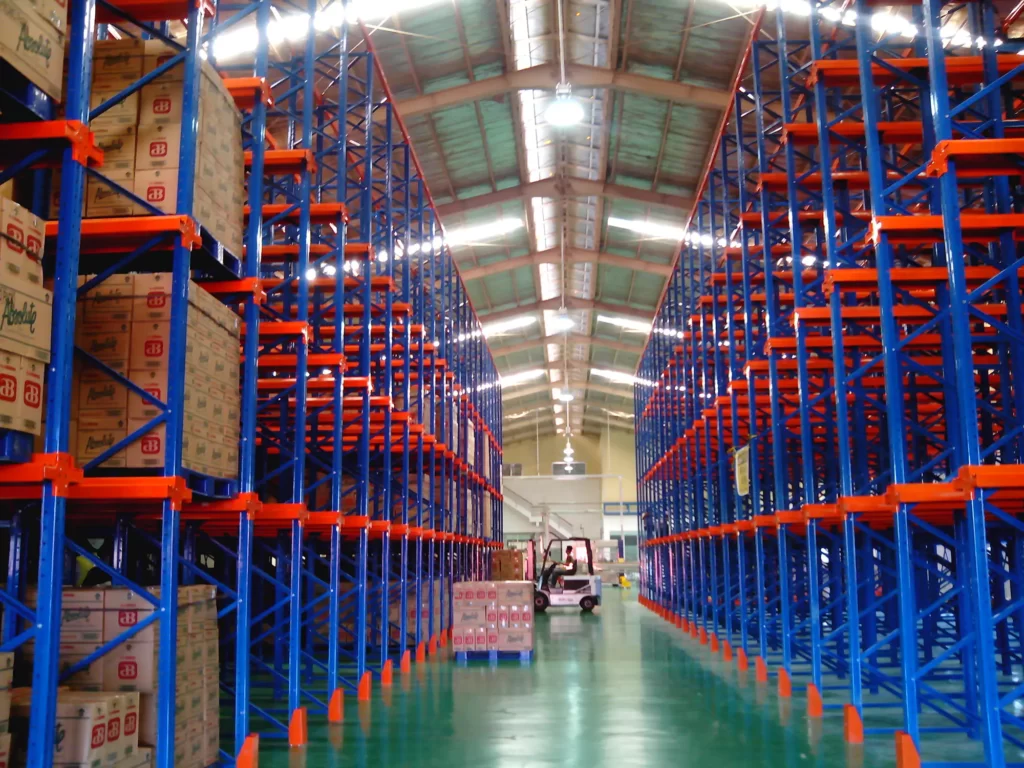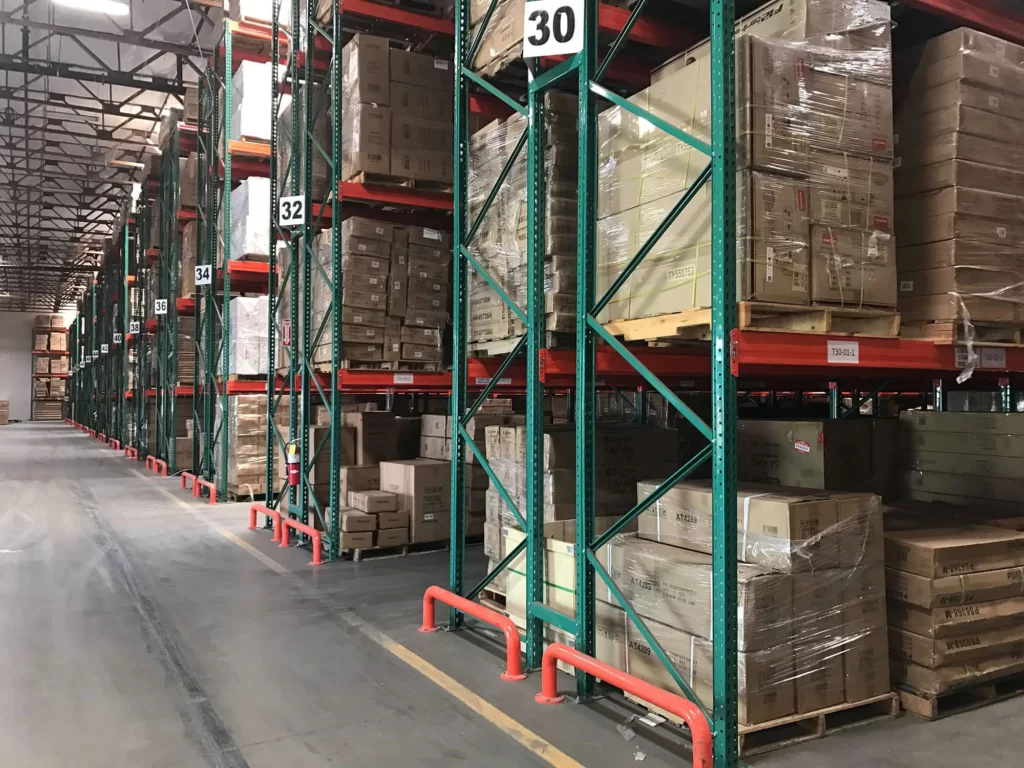Warehouse inventory management is one of the important tasks for any organization. Managing the inventory in the right way can work both for small industrial warehouses and large organizations’ warehouses or distribution centers. Therefore, inventory systems have been introduced which are known as FIFO and LIFO.
These inventory management systems maintain an extremely organized warehouse record. FIFO might work for one organization and may not work for another. Likewise for the LIFO inventory system.
We will be describing more about FIFO and LIFO storage systems in the industrial warehouses ahead. FIFO vs LIFO, the key differences, what sort of inventory is suitable for what storage system?
So, let’s start with the basics of these storage systems. What exactly are these systems and why are they used?

FIFO Storage System
FIFO is short for First In, First Out. This storage system is used to keep the first stock that comes in should be the one that must take out first. This storage system adds value to the business as it ensures to avoidance expiration of products. Therefore, businesses do not lose money. Or these systems refrain goods from becoming obsolete.
Let’s take an example of how the FIFO storage method works. In the case of perishable items like food, medicine, and cosmetics, or when the product may become obsolete like technology, the organization uses the FIFO storage method. This method ensures that the product manufactured should be sold first.
If the FIFO storage system is executed well, then the business can definitely achieve a balanced and profitable stock rotation.

The Most Common FIFO Storage System
The most common FIFO storage system for pallet racking is:
- Pallet flow racking
- Compact pallet racking system
- Shuttle racking system
- Carton flow racking system
LIFO Storage System
LIFO is the short form for Last In, First Out. This storage system is the opposite of the FIFO storage method. In this method, the stock that is stored last is taken out first. The new inventory is used first and given priority over the previous inventory.
LIFO is good for those products that can be stored for a longer time. For instance, the LIFO storage system can be well implemented for homogenous products. Such products do not lose their value over time. Also, the LIFO storage system is not applicable for perishable and expirable products.
To better understand what products this storage system supports that are non-perishable and don’t lose their value over time, here are some examples:
- Building material
- Hardware material
- Stone material
- Glass
- Ceramics

The Most Common LIFO Storage System
The most common pallet racking system that uses LIFO are:
However, it depends on how the inventory is received and sold. And how the pallets are managed.
Advantages of Using the FIFO Storage System
As the oldest item in the inventory is to be sold first whereas, the new item stored shall be kept in storage until it is needed, is a FIFO inventory-supported system. The following are the advantages that you can get using this system:
- Helps in Maximizing Storage Space
In the FIFO storage system, the racking requires two aisles’ sides. One will be used at the back for loading the items and the other side will be used at the front for unloading them. This idea of storing the items increases the storage space where more pallets can be stored and you can save the space of extended aisles.
Also, the FIFO method provides an automated rotation of products where it is not mandatory to manually set the items. Therefore, the storage space makes its own way.
- Reduced Risk of Obsolescence
The FIFO storage system reduces the risk of spoilage or obsolescence. Because the products that were stored in the first place will be sold first. Therefore, the products will be in rotation without being delayed.
- Fewer Labor Hours
As mentioned earlier, the FIFO method does not require manual rotation of products therefore, the automated stock rotation saves you time and money. It can reduce the cost of labor who might manually do this work.
There are fewer chances of product expiration or the product getting obsolete in the FIFO inventory management system. It works best for industries with sensitive products like pharmaceuticals, beverages, food items, and sometimes apparel. Hence, automated product rotation reduces manual product rotation.
- You Can Get an Accurate Inventory Valuation
The actual flow of goods is better determined with the FIFO method. This storage system supports tax purposes. You must be surprised how? Well, in this storage system, the items that were stored first are recognized first and they are likely to have less cost as compared to now.
- Warranty Guarantee
Manufacturers provide warranties with their products that will be used by the end users, eventually. Under the FIFO storing method, the oldest products are sold first. So that, the customers can claim a warranty within the provided time frame.
But unlike the LIFO system, the product might sit in the warehouse for a longer time. Therefore, the expiry of the warranty of the oldest items might be near or it potentially already expired.
- Improved Cash Flow
The products have a proper rotating cycle, ensuring a good business cash flow. Because the items that get older neither get expired and lose money nor the older items are sold at discounted prices.
- Customer Satisfaction with Better Customer Experience
The FIFO inventory system provides a better customer experience because the products shipped remain consistent. Using this storage method, customers always receive fresh and quality items which ensures brand loyalty. This best-quality item experience increases customer satisfaction with the product. Also, they tend to buy more items again and again.
- Improved Stock Turnover
The FIFO storage system ensures frequent stock turnover. The oldest items quickly get sold which benefits the inventory turnout rate. This way the business increases its efficiency rate and makes profits.

Advantages of Using the LIFO Storage System
The last item to add to the stock must be the first item to be sold out in a LIFO inventory-supported system. The following are the advantages you can get from this storage system:
- Cost and Revenues Can Easily be Matched
The LIFO storage system improves the financial reporting system. As it records the cost of goods sold with the revenue of recently purchased items. Therefore, cost and revenues are aligned and improve the financial records in a better way.
- Reflection of Current Market Conditions
LIFO storage system reflects the current market condition due to the fact that it has been purchased recently and will be sold as soon as possible at the current market price. This is the reason businesses can record the current market analysis and act accordingly.
- Accurately Tracking the Revenue
The LIFO is a more accurate storage system as compared to FIFO. If you are a manufacturing company and the cost to produce the item has increased then it is possible to match the prices with current revenues.
As it can better determine your actual earning. Secondly, if the price of the manufacturing drops, then the difference between making the first and last item will cover this case.
Meanwhile, the FIFO storing method underestimates the cost of production and overestimates the profits therefore, it is less accurate than the LIFO system.
- Improved Storage Capacity
The one-aisle approach system gives you various advantages over the FIFO storage system. If you use the LIFO inventory management system then it may turn out to be useful in terms of storage capacity.
You can load and unload items from the same aisle. This means that the empty floor can be used to store more products. But the space left on the aisles will be minimized.
- Better Productivity
You can increase productivity by using a high-density LIFO storage system in your business (warehouse). There is no two-sided racking system, instead, you can save time and be more productive to streamline your warehouse.
Pallets need to be loaded and unloaded using the same aisle. You do not need to travel back and forth to load and retrieve the items stored.
- The simplicity of the Operations
LIFO is a simple yet easy-to-operate inventory management system. It does not require consistent inventory monitoring. The item you stock at last is the one that is sold first. It’s an easier and more organized way to manage the inventory. Also, you can have a clearer track of the cost of goods sold.
FIFI vs LIFO – Is There Any Similarity?
Both FIFO and LIFO are very different inventory management systems. But there are some similarities as well which are as follows:
- Both storage systems are used to manage goods in the pallets in form of queues or stacks.
- Both inventory systems used computer or automated systems that are used for real-life applications. These automated systems control material handling, inventory management, and supply chain management.
- The one big similarity is that both storage systems depend on the product that remains the same in the inventory. Whereas, the cost structure is something different between these two as the cost fluctuates when compared to the manufacturing price.
Difference between FIFO and LIFO Storage Systems (FIFO vs LIFO)

Until now, we have almost covered the FIFO and LIFO storage systems. The key differences between these storage systems should be considered so that you can apply them in your business.
(1) Accessibility
The FIFO storage method allows the first item added to the store to be the one that sold first. Whereas the LIFO storage system allows the reverse order that states, the last item that goes in should be the first one to be sold. This is the order of inventory management in the storage method.
(2) Usage
The items that are stored first are processed first in the FIFO storage system. Mostly, the rotation of items is quick and ensures the safety of the product. Meanwhile, in the LIFO storing system, the items that are added last are the ones that are processed first.
The usage of elements can affect the product’s reliability in the LIFO method. But the FIFO method ensures avoiding the product’s effectiveness.
(3) Complexity of Time
The FIFO method timely sells those items that were stored in the first place. Whereas, the LIFO method sells the recently added items which don’t ensure to sell of the items considering the expiration date. The goods need to be available on the store’s shelves and at the user’s end to avoid expiration and the product becoming obsolete.
(4) Space Management
FIFO requires more space in the order of the items that must be in the queue. LIFO does not require additional space to store goods because the items can easily be added as they are sold. Spacing is a major issue when we consider inventory issues. Therefore, managing them using the correct way can lead us to efficient operations.
LIFO vs FIFO – Which One Is More Successful?
FIFO and LIFO both are working and adapted to the company’s inventory management. So, the question arises which storage system is better? Well, there is no clearer answer to that question. It actually depends on the type of company you are operating and what sort of product you are dealing with.
It is generally said that FIFO is the most successful inventory management system when it comes to industrial warehouses. Because the prices of the product remain the same with the strategy of removing the oldest item first. FIFO results in higher net incomes when prices are rising rapidly.
Whereas, the LIFO storage system works for the industry where prices are fluctuating. If LIFO is applied when the prices are rising then the net income will be shown less.
If you are new in the industry then we would recommend you do a topic research and start with the simple method of FIFO. But some risk-takers might be new to the industry or have been working long enough to try new storage methods.
Therefore, they can try out the LIFO storage system. With the risk associated with the LIFO storage system, it can really do well when executed properly and timely.

Which Storage Method Should Be Implemented?
The inventory management system is something that evaluates total inventory features. If you are unclear about whether to choose LIFO or FIFO then here are some tips:
- LIFO is prohibited by accounting standards. Therefore, it is easy for business owners to decide between them. LIFO is not advisable in many regions in the U.S. the official way of calculating inventory should be as per the law.
- LIFO can be profitable for industries where there is a continuous increase in production costs.
- With the perishable items and short shelf life, the FIFO storage system should be adopted.
- In order to increase your profit margins, if you are using the FIFO method then you need to increase the product prices because the cost of the goods is also increasing.
- Choosing between LIFO and FIFO is not a lifetime commitment. You can switch between these inventory management systems. Whichever is suitable for your business. If you want to change your storage method and you are not satisfied with your current inventory handling method then there is a guidance of CPA for such matters.
Industries That Use LIFO As a Storage System
Many industries use LIFO as their permanent storage system. They are as follows:
- Automotive industries are using the LIFO method when they need quick shipment.
- Production companies of non-perishable items
- Petroleum-based companies. (production)
- Pharmaceutical industries in the case of some products
Industries That Use FIFO As a Storage System
The FIFO storage system is widely used in many industries. That includes:
- Grocery wholesalers warehouses
- Companies with perishable items like food, beverages, pharmaceutical items, etc.
- Those companies use the FIFO method as their permanent storage system that makes sure there isn’t any old inventory left in the warehouse.
Final Thoughts
Whether you use the LIFO inventory method or the FIFO storage system, your inventory handling should be organized and follow the rules that make your company some money. Implementing a proper inventory system in your company can save you time and add value to your company. Also, you can add net income and minimize your tax burden from efficient and effective sales using a proper storage system.
Both inventory systems can work better when they are paired with automated computer systems. Because this way the inventory can be managed well and there will be an organized record of purchasing and selling of the goods.








